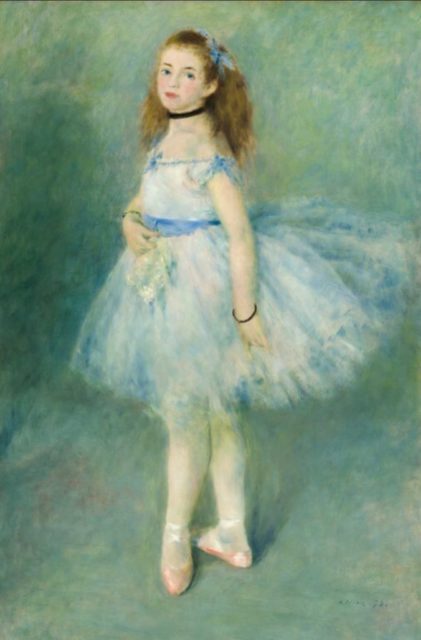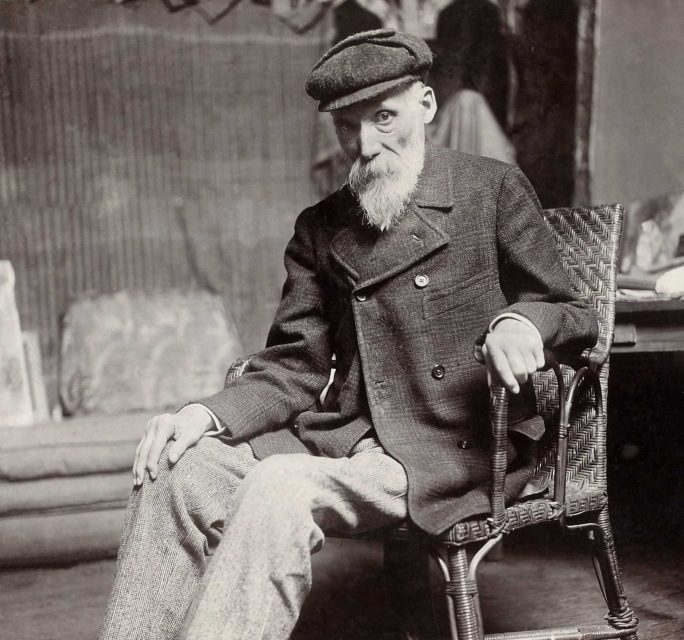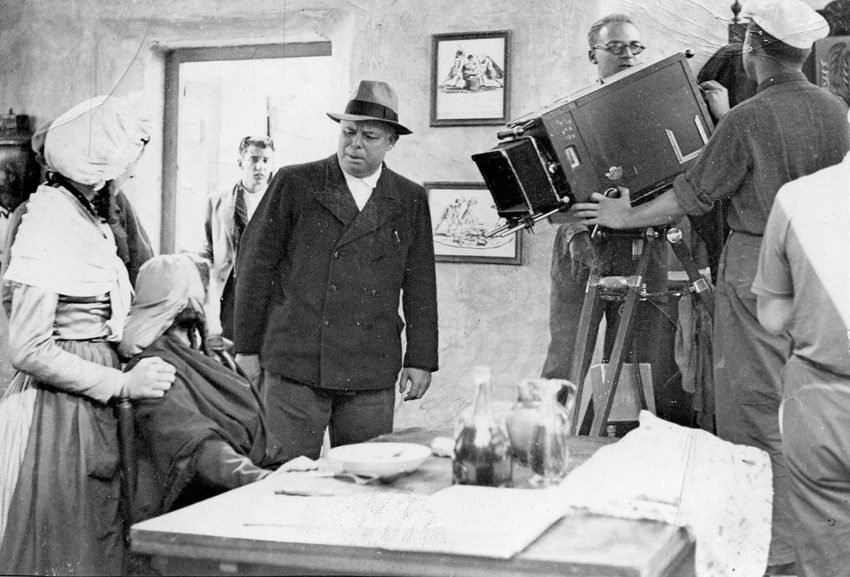This is the cover story of the next edition, April-June 2017, Film and Digital Times — going to press now for distribution on opening day of NAB, April 24.
Image of Color: Pierre-August Renoir is an exhibition at the Miyagi Museum of Art in Sendai, Japan. It runs until April 16 — this Sunday. Not to be missed if you are in Japan.

Woman with a Basket of Flowers Pierre-August Renoir, 1895 Woodone Museum of Art, Japan (127.3 x 40 cm oil on canvas)
Pierre-Auguste Renoir completed Woman with a Basket of Flowers in 1895. In the same year, 1895, cinema was “born.”
On December 28, 1895, ten short films by Auguste and Louis Lumière were projected on a screen in the Salon Indien at the Hotel Scribe in Paris. These were the first motion pictures viewed by a paying audience in France. The Salon Indien was a billiard room in the Grand Café, which occupied the Scribe’s ground floor at the corner of Rue Scribe and Boulevard des Capucines. The show cost 1 Franc per person. It was not an immediate success. Only 33 people arrived. However, word spread quickly, and soon more than 2,500 tickets were sold each day.
The following year, cameramen with Lumière Cinematographe cameras travelled around the world, making short documentaries. In 1896, Katsutaro Inabata, a former classmate of Auguste Lumière, purchased a Cinematographe camera, 50 rolls of unexposed film, and secure exclusive rights for Japan. He returned to Kyoto in 1897 with Constant Girel, a Lumière cameraman/projectionist.
Renoir cinema connections continue. Pierre-Auguste Renoir’s son Jean became a film director, screenwriter, actor, producer and author. He directed more than 40 films. His masterpieces include Grand Illusion, Rule of the Game, A Day in the Country, and Boudu saved from Drowning. The British Film Institute ranked Jean Renoir as the fourth greatest director of all time.
Pierre-Auguste Renoir’s grandson Claude Renoir (1913-1993) was a prominent French cinematographer, with credits that include The River, The Horsemen, and the James Bond film The Spy who Love Me.
And how does Renoir relate to FDTimes’ recent visit to the Fujifilm Factory in Japan? It is near Sendai. On our way to tour the factory, we passed the Miyagi Museum of Art in Sendai. And there, by happy coincidence, was one of the most comprehensive exhibits of Renoir’s work I have seen. Renoir in Japan?
After the opening of Japan in the 19th century Meiji era, painters in France were fascinated by Japanese Ukiyoe—woodcut paintings. Monet, Manet, Van Gogh, Renoir and others were influenced by “Japonism.” In a similar way, western art and particularly Impressionism, was introduced to Japan by artists such as Seiki Kuroda.
Kōjirō Matsukata and Magosaburō Ōhara were Japanese businessmen and art lovers who amassed some of the largest Impressionist collections in the world. There’s a story that when Monet offered Matsukata any painting in Giverny, he bought 18 of them. The French art collection of Kojiro Matsukata is now open to the public in The National Museum of Western Art (NMWA in Tokyo).
Further reading: “Japan’s Love for Impressionism, from Monet to Renoir,” Prestel 2016.












Great piece Jon, Thanks